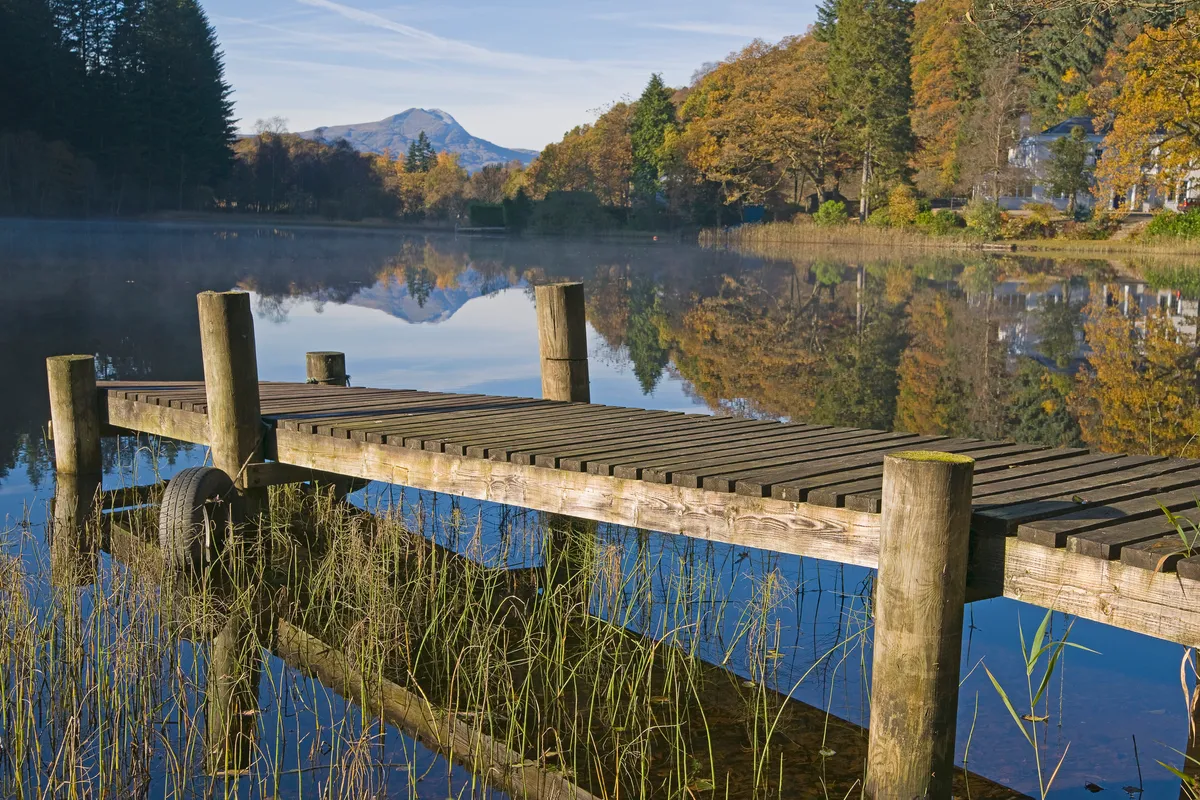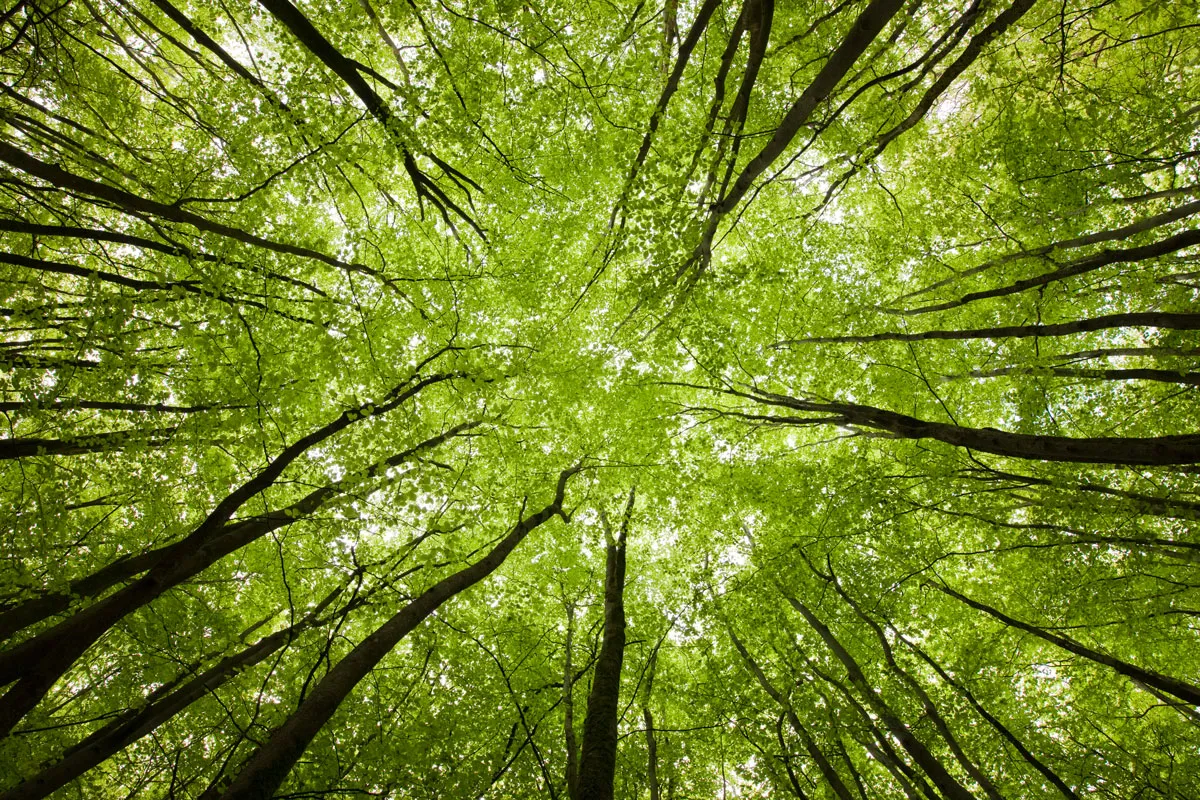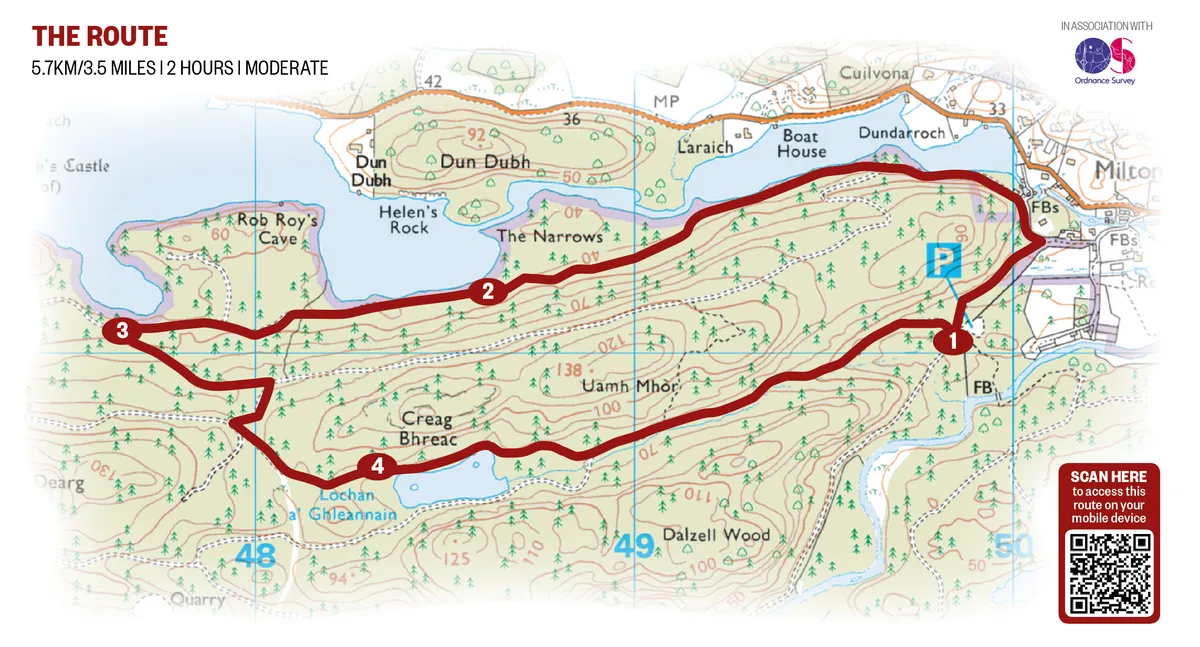The great Loch Ard Forest extends west from the attractive village of Aberfoyle towards the rugged hills beside Loch Lomond.
It is something of a hidden treasure, boasting no less than 17 different species of conifer alongside remnants of ancient oaks. Wildlife includes red and roe deer, pine martens, otters, red squirrels and reintroduced water voles.

Sharing the forest with this plethora of wildlife are a number of provocative sculptures created by local artist and environmentalist Rob Mulholland. These fun works appeal especially to children and are designed to represent the interconnection between the animals and birds in the forest’s food chain. One even features red squirrels equipped with light sabers, which represents their fightback against the invading North American grey squirrels. Keep your eyes peeled on the walk and you will spot many more eye-catching works, each an education in local flora and fauna. There are plenty of fine views, too.

An easy 3.5-mile circuit through the trees and alongside the island-strewn loch starts from the Forestry Commission’s Milton Car Park. To get there, follow the Inversnaid road (B829) from the village of Aberfoyle for a mile, taking the first left where the road bends. An information board at the parking area shows the vast network of tracks that lead through the Queen Elizabeth Forest Park. A map is available from the Forestry Commission’s David Marshall Lodge on Duke’s Pass at Aberfoyle; you can also download a version from forestry.gov.uk.
1. High Loch
Walk back along the access road and follow a sign for Loch Ard – the name translates from the Gaelic Loch na h-Áirde as the High Loch. Where the road branches, keep right for your first views of the loch.
The River Forth begins its journey to the sea via Edinburgh from the eastern end of this peaceful loch. From here, to the west, you can see the impressive bulky face of Ben Lomond. The Munro looms large ahead, lending a true Highland feel to the walk.
2. Silver eagle
Stroll along this fairly flat section for about a mile and you will reach a sculpture of an eagle looking over the water – the first in a series of animal artworks. Though this fine-looking bird is decked out in silver, it pays homage to the magnificent golden eagles that can be see here. The sight of one soaring above is a striking reminder that this land belongs to a top predator. In the summer months, ospreys, having travelled from Africa, also hunt over the shimmering waters of Loch Ard.

3. Sounds of the wild
Continue to a junction, signed for Milton Car Park, and gaze upwards to spot the unusual red squirrel sculptures. Other features on the trail include sound posts with recordings of animals that may be spotted, or heard, by the trail, such as toads, deer, stags, great spotted woodpeckers, jittery jays and buzzards.
The route now climbs steeply for half a mile. At a signed junction, follow the forest road to the right and then shortly after veer left.
4. Vulnerable voles
The wide forest track levels, leading through a dense section of forest that opens up as you approach the pretty Lochan a’ Ghleannain.
On a fine day, this is a great picnic spot and is a favourite location for artists. Look out for water voles – your chance to observe a real life Ratty from The Wind in the Willows. These small rodents have been under threat throughout the national park in recent years, largely due to the presence of non-native mink.Continue heading east on the wide track for an easy return to the starting point.
Map
Click on the map below for an interactive version of the route.

